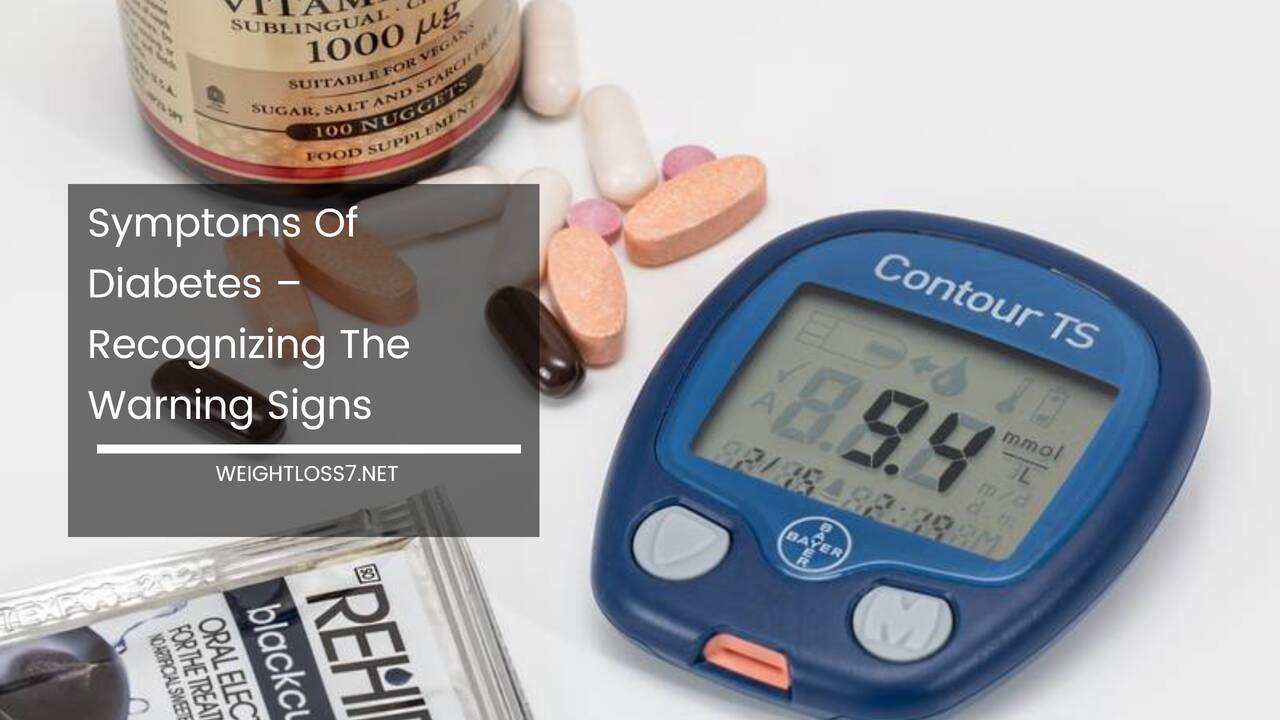Symptoms Of Diabetes – Recognizing The Warning Signs

Recognizing the early signs of diabetes can allow patients to seek treatment sooner. This, in turn, can improve their overall prognosis and arrest the development of the disease at a much earlier stage.
In fact, it could even save their lives. Many at-risk patients are unaware of the early symptoms associated with diabetes, however, and may not undergo testing on a regular basis.
The early warning signs of diabetes are usually mild and are often attributed to other causes or ignored by the patient.
Understanding the symptoms and causes of diabetes can help patients better protect themselves against the progressive effects of this dangerous disease.
Symptoms Of Type 1 Diabetes
Warning signs of Type 1 diabetes include:
• Unexplained, severe thirst or hunger
• Unexplained weight loss
• Fatigue and dizziness
• Frequent urination
These symptoms are serious and should be discussed with a physician in order to establish a treatment and management plan for the disease.
Most patients with Type 1 diabetes will eventually require insulin treatments, so maintaining a close watch on blood glucose levels is essential in order to treat the disease effectively.
Symptoms Of Type 2 Diabetes
In addition to the symptoms described for Type 1 diabetes, some Type 2 diabetes sufferers experience a variety of additional symptoms, including:
• Poor circulation
• Blurred vision
• Recurring or severe infections
• Wounds that are slow to heal
A significant percentage of Type 2 diabetes patients experience no symptoms at all prior to their diagnosis. Other patients may attribute these symptoms to other causes.
Once diagnosed, it is critical for Type 2 diabetes patients to select a reliable glucose monitoring product to manage their disease effectively. Measuring and monitoring blood sugar levels is crucial in order to create an effective treatment plan.
Fingerstick methods are often used during the initial stages of treatment or for milder cases, while continuous blood glucose monitors may be recommended for patients with more serious cases of diabetes.
Ongoing Management Of Diabetes
Once diabetes symptoms have been identified and the disease has been diagnosed, patients should follow the treatment plan outlined by their physician exactly. In some cases, diet and exercise can significantly reduce blood sugar fluctuations.
For more advanced cases of diabetes, however, insulin injections or an insulin pump may be required to maintain the proper levels of glucose in the bloodstream.
Regular monitoring of blood sugar levels is necessary in order to ensure proper treatment of the disease.
By identifying the symptoms of diabetes during the early stages, patients can begin a course of treatment sooner and bring their blood sugar levels under control more rapidly.
This can improve the overall prognosis for the patient and ensure a more favorable outcome in maintaining good health when living with diabetes.

















